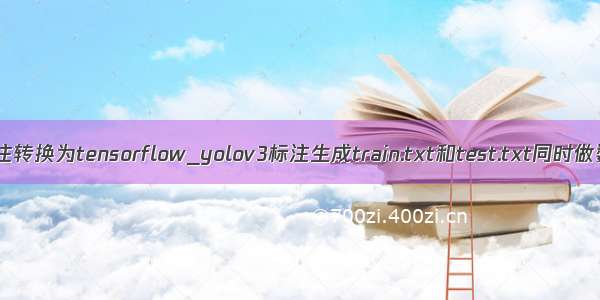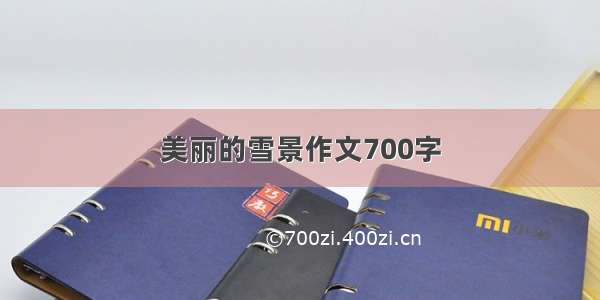
YOLO训练的label bbox格式是txt文档,如果是PASCAL VOC XML格式的文档或者其他类型文档,需要另外转换格式。
YOLO格式要求
YOLO txt文档格式,它是由class id,归一化后的center_x,center_y中心坐标以及归一化后的w,h组成,如下图所示:
<class_id> <center_x> <center_y> <w> <h>
如果xmin、xmax、ymin、ymaxx_{min}、x_{max}、y_{min}、y_{max}xmin、xmax、ymin、ymax分别表示标注框的x轴方向的最小最大值和y轴方向的最小最大值,则计算公式如下:
WIDER FACE label转换
接下来介绍WIDER FACE数据集的label格式,是由图片位置路径,边框的数量以及边框的属性组成,其中边框的属性有:x1, y1, w, h, blur, expression, illumination, invalid, occlusion, pose
数据集所在地址:http://shuoyang1213.me/WIDERFACE/
x1, y1 是指BBox的左上角坐标,w, h是指BBox的宽高blur 是指照片的模糊程度: 0清晰、1一般、2严重expression 是指照片的表情: 0正常、1夸张illumination 是指照片的曝光程度: 0正常、1极度invalid 是指照片是否无效: 0否、1是occlusion 是指照片是否有被遮挡: 0无、1部分、2大量pose 是指照片的姿势: 0正常,1非典型
WIDERFACE数据集的label格式WIDER FACE 数据集的 label 格式WIDERFACE数据集的label格式
了解格式后就可以做转换啦~~或是也可以直接使用以下我提供的代码,我的目录格式如下。其中 cfg 是自己创建的文件夹,用来放生成的 train.txt, val.txt (会写入所有的训练集路径)。而 wider_face_split, WIDER_train, WIDER_val 则是 WIDER FACE 数据集的训练集、验证集、label。
因為我的数据集类别只有一个,所以第80行 f.write(‘0 %s %s %s %s\n’ % (x, y, w, h)) 的第一个参数是0
import osimport shutilimport cv2def convert(size, box):dw = 1./size[0]dh = 1./size[1]x = (box[0] + box[1])/2.0y = (box[2] + box[3])/2.0w = box[1] - box[0]h = box[3] - box[2]x = x*dww = w*dwy = y*dhh = h*dhreturn (x,y,w,h)def run_convert(data_file, wider_train, yolo_path, file_info_name, write_txt):now_path = os.getcwd()data_counter = 0with open(data_file, 'r') as f:print("read file...")data = f.readlines()for data_line in data:data_line = data_line.strip()data_info = data_line.split('/')# the image nameif len(data_info) == 2:label_0_counter = 1data_info_path = os.path.join(data_info[0], data_info[1])data_path = os.path.join(wider_train, data_info_path)# copy image to yolo path and renameshutil.copyfile(data_path, yolo_path + str(data_counter) + '.jpg')image = cv2.imread(data_path)image_size = [image.shape[1],image.shape[0]]# image --> renamewith open(file_info_name, 'a') as f:line_txt = [data_info_path, ' --> ', yolo_path + str(data_counter) + '.jpg', '\n']f.writelines(line_txt)with open(write_txt, 'a') as f:path = os.path.join(now_path, yolo_path)line_txt = [path + str(data_counter) + '.jpg', '\n']f.writelines(line_txt)data_counter += 1label_list = []# process other infosub_count = 1continue# the count of bndBoxif sub_count == 1:sub_count += 1continue# bndBox infoprint("process ", label_0_counter, " bndBox info...")if sub_count >= 2:label_0_counter += 1info_list = data_line.split(' ')# print("WIDER FACE(x1, y1, w, h): ", info_list[0], info_list[1], info_list[2], info_list[3])xmin = int(info_list[0])xmax = int(info_list[0])+int(info_list[2])ymin = int(info_list[1])ymax = int(info_list[1])+int(info_list[3])box = [xmin, xmax, ymin, ymax]x, y, w, h = convert(image_size,box)# print("YOLO txt(x, y, w, h): ", x, y, w, h)with open(yolo_path + str(data_counter-1) + '.txt', 'a+') as f:f.write('0 %s %s %s %s\n' % (x, y, w, h))print('the file is processed')wider_train = "WIDER_train/images"yolo_path = "yolo_train/"data_file = "wider_face_split/wider_face_train_bbx_gt.txt"file_info_name = 'file_info_train.txt'write_txt = 'cfg/train.txt'# wider_train = "WIDER_val/images"# yolo_path = "yolo_val/"# data_file = "wider_face_split/wider_face_val_bbx_gt.txt"# file_info_name = 'file_info_val.txt'# write_txt = 'cfg/val.txt'if not os.path.exists(yolo_path):os.mkdir(yolo_path)else:lsdir = os.listdir(yolo_path)for name in lsdir:if name.endswith('.txt') or name.endswith('.jpg'):os.remove(os.path.join(yolo_path, name))if os.path.exists(file_info_name):file=open(file_info_name, 'w')if os.path.exists(write_txt):file=open(write_txt, 'w')run_convert(data_file, wider_train, yolo_path, file_info_name, write_txt)
转换好的格式会放在 yolo_train, yolo_val 文件夹里,所有 train, validate 的图片路径 txt文档则会放在cfg文件夹里(train.txt, val.txt)。转换完就可以开始训练了。
PASCAL VOC XML转换
以下就是 VOC xml 的格式, 里的 是指照片的 width, height, depth, 是检测目标信息: 类别 name,BBox的xmin, xmax, ymin, ymax,也就是指 BBox 的 x, y 坐标的最小与最大值。
<annotation><folder>VOC</folder><filename>_000027.jpg</filename><source><database>The VOC Database</database><annotation>PASCAL VOC</annotation><image>flickr</image></source><size><width>486</width><height>500</height><depth>3</depth></size><segmented>0</segmented><object><name>person</name><pose>Unspecified</pose><truncated>0</truncated><difficult>0</difficult><bndbox><xmin>174</xmin><ymin>101</ymin><xmax>349</xmax><ymax>351</ymax></bndbox><part><name>head</name><bndbox><xmin>169</xmin><ymin>104</ymin><xmax>209</xmax><ymax>146</ymax></bndbox></part><part><name>hand</name><bndbox><xmin>278</xmin><ymin>210</ymin><xmax>297</xmax><ymax>233</ymax></bndbox></part><part><name>foot</name><bndbox><xmin>273</xmin><ymin>333</ymin><xmax>297</xmax><ymax>354</ymax></bndbox></part><part><name>foot</name><bndbox><xmin>319</xmin><ymin>307</ymin><xmax>340</xmax><ymax>326</ymax></bndbox></part></object></annotation>
接着就可以使用以下代码来转换:
要将第57行 all_classes设定为要预测的类别:
import osimport shutilfrom bs4 import BeautifulSoupdef run_convert(all_classes, train_img, train_annotation, yolo_path, write_txt):now_path = os.getcwd()data_counter = 0for data_file in os.listdir(train_annotation):try:with open(os.path.join(train_annotation, data_file), 'r') as f:print("read file...")soup = BeautifulSoup(f.read(), 'xml')img_name = soup.select_one('filename').textfor size in soup.select('size'):img_w = int(size.select_one('width').text)img_h = int(size.select_one('height').text)img_info = []for obj in soup.select('object'):xmin = int(obj.select_one('xmin').text)xmax = int(obj.select_one('xmax').text)ymin = int(obj.select_one('ymin').text)ymax = int(obj.select_one('ymax').text)objclass = all_classes.get(obj.select_one('name').text)x = (xmin + (xmax-xmin)/2) * 1.0 / img_wy = (ymin + (ymax-ymin)/2) * 1.0 / img_hw = (xmax-xmin) * 1.0 / img_wh = (ymax-ymin) * 1.0 / img_himg_info.append(' '.join([str(objclass), str(x),str(y),str(w),str(h)]))# copy image to yolo path and renameimg_path = os.path.join(train_img, img_name)img_format = img_name.split('.')[1] # jpg or pngshutil.copyfile(img_path, yolo_path + str(data_counter) + '.' + img_format)# create yolo bndbox txtwith open(yolo_path + str(data_counter) + '.txt', 'a+') as f:f.write('\n'.join(img_info))# create train or val txtwith open(write_txt, 'a') as f:path = os.path.join(now_path, yolo_path)line_txt = [path + str(data_counter) + '.' + img_format, '\n']f.writelines(line_txt)data_counter += 1except Exception as e:print(e)print('the file is processed')all_classes = {'class_2': 2, 'class_1': 1, 'class_0': 0}train_img = "train/image"train_annotation = "train/annotation"yolo_path = "yolo_train/"write_txt = 'cfg/train.txt'if not os.path.exists(yolo_path):os.mkdir(yolo_path)else:lsdir = os.listdir(yolo_path)for name in lsdir:if name.endswith('.txt') or name.endswith('.jpg') or name.endswith('.png'):os.remove(os.path.join(yolo_path, name))cfg_file = write_txt.split('/')[0]if not os.path.exists(cfg_file):os.mkdir(cfg_file)if os.path.exists(write_txt):file=open(write_txt, 'w')run_convert(all_classes, train_img, train_annotation, yolo_path, write_txt)
转换好的格式会放在yolo_train, yolo_val文件夹里,所有 train, validate 的图片路径txt文档会放在cfg文件夹里(train.txt, val.txt)。
labelme转YOLO格式
我的labelme是自己改过的,如果报 label_file.imageWidth错误,请自己读一下图片的宽高。用法:直接改一下dirpath,dstpath路径即可,dirpath里面可以有子文件夹,最后dstpath里面的标定内容是从0开始顺序编号的文件。
import osimport iofrom io import BytesIOimport uuidimport PIL.Imageimport codecsimport threadpoolimport numpy as npimport cv2import base64from math import radians,fabs,sin,cosfrom labelme.label_file import *from labelme import utilsimport shutildirpath = r'xxxxx'dst_path_dir = r'xxxxx'files = [os.path.join(y, file) for y, z, x in os.walk(dirpath)for file in x if os.path.splitext(file)[1] == '.json']if not os.path.exists(dst_path_dir):os.makedirs(dst_path_dir)index_files = []for i in range(len(files)):index_files.append([i, files[i]])def ThreadFun_c1(file):index = file[0]file = file[1]print(file)txtname = os.path.join(dst_path_dir, '{}.txt'.format(index))label_file = LabelFile()label_file.load(file)shutil.copy(file.replace('.json','.jpg'), txtname.replace('.txt','.jpg'))with codecs.open(txtname,'w','GBK') as f:for shape in label_file.shapes:x1 = shape['points'][0][0]/label_file.imageWidthy1 = shape['points'][0][1]/label_file.imageHeightx2 = shape['points'][1][0]/label_file.imageWidthy2 = shape['points'][1][1]/label_file.imageHeightf.write('{} {} {} {} {}\n'.format(shape['label'],(x1+x2)/2,(y1+y2)/2,abs(x1-x2),abs(y1-y2)))# 定义了一个线程池,最多创建8个线程pool = threadpool.ThreadPool(16)# 创建要开启多线程的函数,以及函数相关参数和回调函数,其中回调数可以不写,default是nonerequests = threadpool.makeRequests(ThreadFun_c1, index_files)# 将所有要运行多线程的请求扔进线程池[pool.putRequest(req) for req in requests]# 所有的线程完成工作后退出pool.wait()'''检查标注文件对不对'''for file in index_files:index = file[0]file = file[1]txtname = os.path.join(dst_path_dir, '{}.txt'.format(index))imgfile = txtname.replace('.txt','.jpg')img = cv2.imread(imgfile)h, w= img.shape[:2]with codecs.open(txtname,'r','GBK') as f:liness = f.readlines()for line in liness:lines = line.strip('\n').split(' ')for i in range(1,5):lines[i] = float(lines[i])x1 = (lines[1] - lines[3] /2) * wx2 = (lines[1] + lines[3]/2)*wy1 = (lines[2] - lines[4]/2)*hy2 = (lines[2] + lines[4]/2)*hx1 = int(x1)x2 = int(x2)y1 = int(y1)y2 = int(y2)if lines[0] == '0':color = (0,255,0)else:color = (0,0,255)cv2.rectangle(img,(x1,y1),(x2,y2),color)cv2.imshow('1',img)cv2.waitKey()
参考目录
/qq_16952303/article/details/114702534
/ching-i/%E5%A6%82%E4%BD%95%E8%BD%89%E6%8F%9B%E7%82%BAyolo-txt%E6%A0%BC%E5%BC%8F-f1d193736e5c
/qq_40622955/article/details/115733954
















